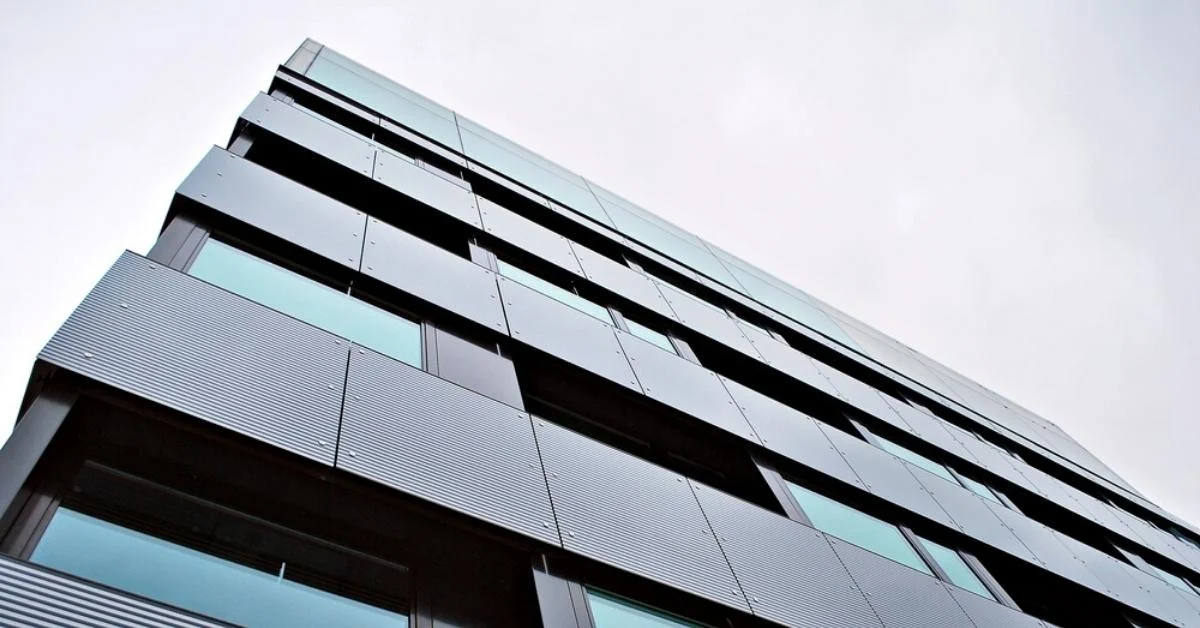Ventilated facades are the answer to those who want to innovate building claddings.
Choosing them means promoting the design and construction of buildings in line with the request for energy efficiency, thus encouraging the logics of green sustainability.
At the same time, ventilated facades contribute to the aesthetic improvement of buildings, thereby increasing their real estate value as well.
These are only some of the advantages ensured by this technological innovation, however.
The following in-depth analysis explains why it is convenient to choose ventilated facades for building cladding and why Isopan technology is widely reliable.
Ventilated facades, what are they?
The ventilated facade involves dry installation, which consists in mechanically assembling the various components ensuring cleanliness, fast installation and the possibility of disassembling each individual cladding element.
Ventilated walls are designed to create a generally upwards air flow in the gap, naturally triggered by the thermal gradient between the temperature in the gap and that of the intake air.
This phenomenon is called the chimney effect and in the hot season it guarantees the reduction of the incoming thermal load, while in the cold season it controls energy losses, water vapour flows and rates.
This type of facade can be applied to:
- Newly-constructed buildings;
- Redevelopment/restoration of the external envelope (implementations of hygro-thermal performance)
Ventilated facade construction methods
The construction methods of ventilated facades involve a system made up of several elements. It is therefore a multilayer construction technique, where the various elements are dry-installed.
In detail, the ventilated facade construction methods involve:
- Insulating layer;
- Load-bearing structure;
- Gap;
- External cladding.
Let us take a close look at the characteristics of these elements.
Insulating layer
The insulating layer is applied directly onto the external surface of the building. It can be composed of polyurethane foam or mineral wool sandwich panels, which ensure excellent standards of thermal insulation.
In addition to guaranteeing thermal resistance, the insulating layer ensures fire resistance and reliability over time
Load-bearing structure
The load-bearing structure has the task of allowing the assembly of the ventilated facade and bearing its weight. It is applied cantilevered on the external wall of the building, with the use of brackets, crosspieces or uprights.
It can be aluminium or stainless steel.
Having defined the general framework of the construction methodology for ventilated facades, let us now analyse the individual elements that they are composed of.
Gap
The gap is the core of ventilated facades. It guarantees the flow of air, creating the chimney effect that provides benefits in terms of energy efficiency.
It is usually between 4 and 8 cm. When building the ventilated facade, it is advisable to check that nothing is obstructing the free flow of air, which could compromise the advantages of this dry construction system.
External cladding
There may be various materials that compose the external cladding of a ventilated facade, each of which is appreciable for its aesthetic value
In any case, it is essential that the facade material is waterproof and fireproof.
Furthermore, it must ensure resistance to atmospheric agents, easy maintenance and reliability over time.
Advantages of ventilated facades
The advantages of installing ventilated facades on a building are numerous and can be summarised as follows:
- Energy efficiency: as specified above, ventilated facades guarantee thermal insulation against both cold and heat, thereby resulting in energy savings;
- Eco-sustainability: the aptitude to guarantee energy savings translates into a lower environmental impact. A fundamental aspect that designers and builders must constantly take into consideration;
- Acoustic insulation: the multilayer system of ventilated facades is ideal for absorbing noises from the outdoor environment. This implies a reduction in noise pollution, leading to an increase in the level of comfort inside the building;
- Easy maintenance: the panels are laid in such a way as to guarantee practical inspection. In addition, the insulating layer resists atmospheric agents thanks to the protection provided by the external cladding;
- Aesthetic improvement: designers and builders can choose from a wide variety of materials that make up the external cladding. In this way, the building gets the best look, also taking into account the context it is located in.


